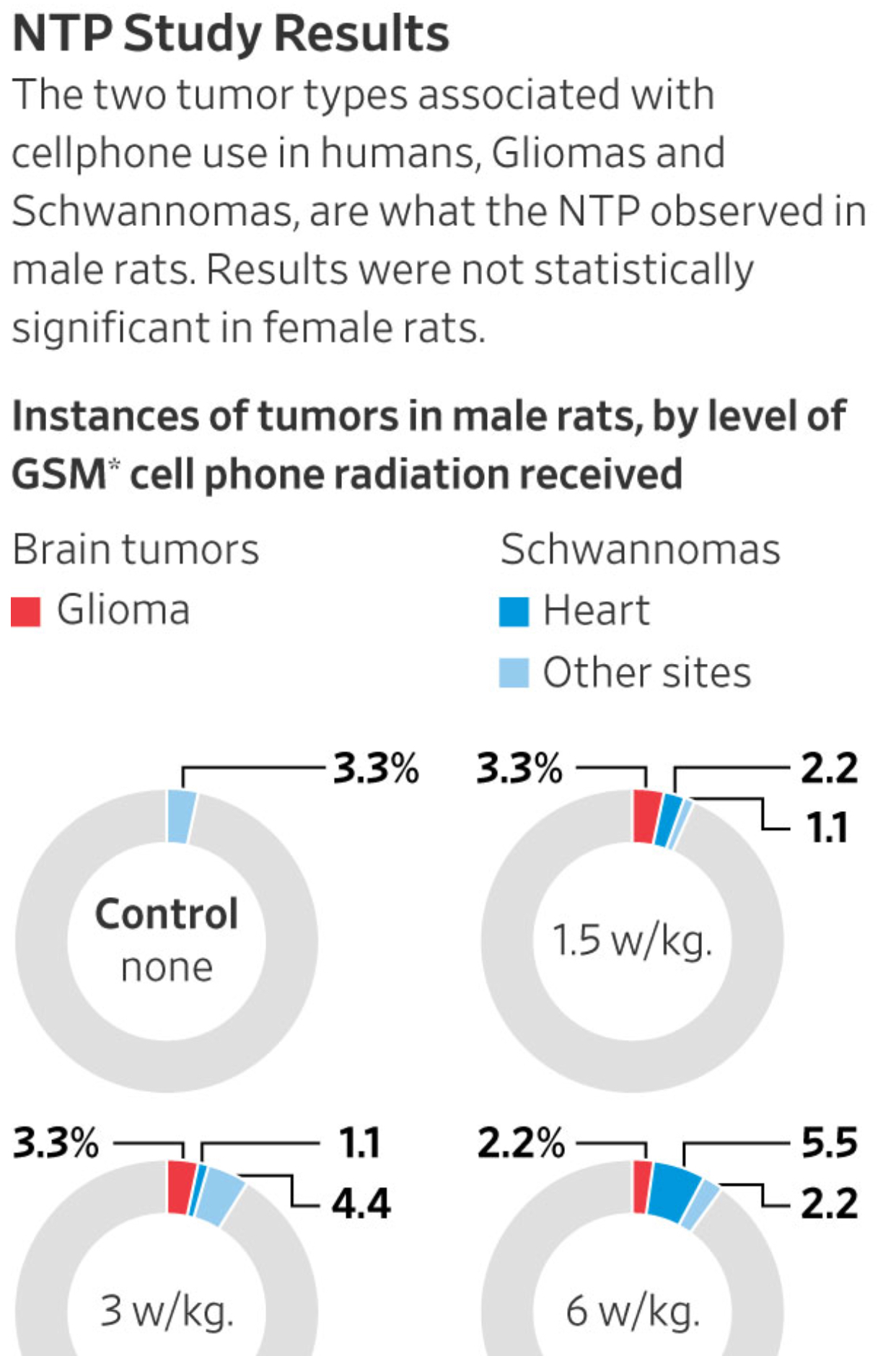Cell Phone Use Is “Not a High-Risk Situation”
Notes from the NTP Press Conference
Here are four key takeaways from the NTP press conference held this afternoon, soon after the release of its two cell phone reports [these are no longer available]:
1. NTP’s bottom line on cell phone use: “This is not a high-risk situation.”
2. RF radiation has biological effects at levels previously believed to be innocuous —they may be good or bad.
3. NTP will continue to do RF health studies. A new exposure facility is being built on the NIEHS campus, which will be smaller and more flexible than the one used for the two-year exposures of the rats and mice in Chicago. It should be ready by late summer.
4. The finding that most impressed NTP was the increase of schwannoma of the heart in male rats. It was statistically significant. This was striking because of the similarity to acoustic neuroma, a tumor which has been reported in human studies. (For more on this, see our original story from May 2016.)
Of course, there is much else to delve into, notably the NTP analysis of DNA breaks, the incidence of brain tumors (glioma) among the male rats and the fact that they lived longer than the controls. The NTP attributes the significantly longer lifespan of the male rats to a lower incidence of chronic kidney disease (nephropathy). At the press conference, Dr. John Bucher, who led the project, suggested that the radiation might lessen inflamation which benefited the kidneys. (See also our previous coverage of DNA breaks in the NTP study.)
The NTP press release, “High Exposure to Radiofrequency Radiation Linked to Tumor Activity in Male Rats,” is here.
Even before the NTP released the two reports this afternoon, it posted an updated version of the “partial” report it issued on the rats in May 2016. The new report features a few tweaks and the addition of a new Appendix (B2), which responds to the criticism of NIH's Michael Lauer that have been frequently cited to counter concerns of a cell phone cancer risk.
After the release, Jeffrey Shuren, the director of the FDA’s Center for Devices and Radiological Health called the NTP evidence of a cancer risk “mostly equivocal or ambiguous.” The bottom line, he said, is that, “We believe the current safety limits for cell phones are acceptable for protecting the public health.” The FDA requested the NTP study back in 1999.
The NTP draft rat cell phone report runs 381 pages and the draft mouse report is 270 pages. They can both be downloaded here, where other related papers and data are also available. The NTP will hold a public peer review of the reports on March 26-28 in Research Triangle Park, NC.
An audio file of the press conference together with a transcript will be posted on the NTP Web site early next week, according to the NTP press office.
[February 6: The transcript and audio file are now available here.]
February 3
The headline in this morning’s New York Times story is “Rodent Studies Suggest Cellphones’ Risk to Humans in Minimal.” The title of the online version is “Cellphones Are Still Safe for Humans, Researchers Say.”
The Wall Street Journal took a different tack with “Why the Largest Study Ever on Cellphones and Cancer Won’t Settle the Debate.” The story included this useful graphic:

The Washington Post picked up the AP feed under “Cancer from Cellphones? New Studies Say No Need to Hang Up.” (Later in the day, it was changed to: “Studies Offer No Clear Answers on Safety of Cellphone Use.”) Meanwhile, the print editon ran a story by one of the paper’s staff reporters with the headline, “Human Health Conclusions Elusive After Cellphone Radiation Studies on Rodents.”
And Bloomberg ran with “Cell Phone Radiation Tied to Rare Tumor in Rats, Study Says.”
For more of Microwave News’ coverage of the NTP RF project, go here.
